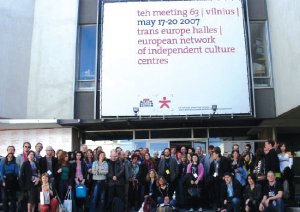
At a conference in Brussels in 1993, I was both surprised and amused to find that one of the speakers was from “the network of European cultural networks”. There were so many cultural networks in Europe at that time someone had the bright idea that there needed to be a network to support them. Today, there are more than 300 cultural networks in Europe, covering a multitude of artforms, disciplines, organisations, countries and professions. There are networks for artists, arts festivals, carnivals, orchestras, arts centres, arts students, writers, dance, museums and even one for jugglers. There is no one central information point where you can find all of the networks listed, but ‘Lab for Culture’ has over 200 in its database (under the directory section of its website). The website www.culture.info is also a useful resource tool for all things cultural in Europe and includes its own directory of networks.
Many of the more established networks are based in Brussels, where the politicians, bureaucrats and funding reside. Others can be found all around Europe, usually in capital cities. The major networks are membership based, meet once or twice a year, and are partly funded through subscriptions. Subscription fees vary greatly (from €50 to over €1,000 a year), usually depending on what the network offers it membership, whether it is publicly funded and how many members it has. Most of the networks hold their meetings in the home city of one of their members. Hosting a meeting can provide opportunities for developing and raising an organisation’s international profile within the media, the arts community and with funding bodies. Nearly all of the networks have websites, and many publish online newsletters for their members.
When I was first introduced to European cultural networks, the Brits were not well represented: today, many UK arts organisations are working beyond our shores. This results in new opportunities, new partnerships and new funding opportunities. Developing an international dimension to an organisation’s work generally seems to please UK funding agencies and local authorities, particularly if you can invite local politicians or your funding agency director to an overseas conference or meeting in Barcelona, Prague or Rome. Many European Community (EC) funding programmes require applicants to include two or more partners from the 27 member states. Joining a network relevant to your area of work can help develop partnerships and projects with like-minded organisations from across Europe, and enable you to apply for a wider-range of EC funding programmes.
The costs and time required for European networking should be seen as a long-term investment that will eventually be repaid with interest, directly and indirectly. Don’t expect an instant pay-back. Just as at home, it takes time to develop relationships and build new partnerships. If you actively participate in the network and involve as many people from your organisation as possible, joining a European or international cultural network can be extremely rewarding for your organisation, your artists and your employees.
Join the Discussion
You must be logged in to post a comment.